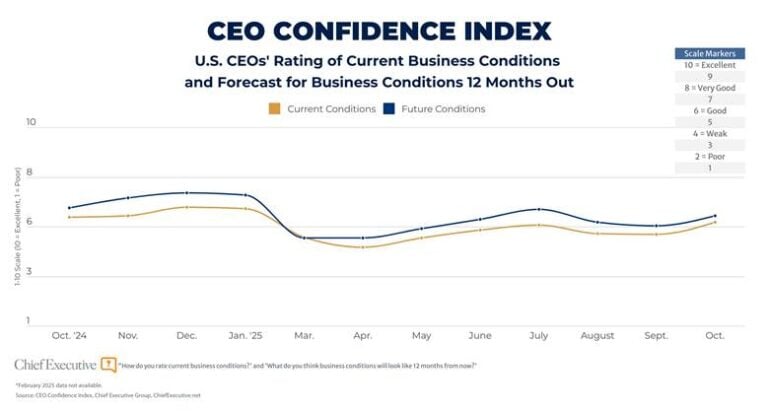
Innovation is supposed to be the lifeblood of Silicon Valley and other tech hubs around the world. But we rarely talk about what conditions it needs to thrive and be sustained over time. If you are working in an industry that has already been making products for a century, how can you innovate within a culture that might have forgotten how to? It’s not going to happen just by hiring a pack of geniuses, putting on a pot of coffee and locking them in a room.
There’s an assumption by some leaders that to make it in a competitive market you need to hit the moonshot. You have to find something the world has never seen before, own the IP, then raise tons of money to scale production.
Not so.
A company can succeed just as well—and at a much lower capital investment—if a leader looks for ways an existing industry has missed the boat on innovation. If you’re in an industry that has been wrestling with a decades-long problem, look to partner with or acquire an external company that has already cracked the code on the moonshot idea.
Apple’s disruption of the phone market and Netflix’s upending Blockbuster and traditional home video are both examples of this model of internal disruption that can be applied to any industry.
But a leader can’t disrupt an organization herself—she needs a core group of idea generators that push the innovation agenda. Business strategists often call them Explorers. An Explorer is someone who has a million ideas and is known as an invention junkie. She might like to make neon signs at home in her garage and in her spare time she repairs vintage steam locomotives. I wouldn’t trust an Explorer to meet a schedule, stay on a budget or do exactly what I asked—but she has the kind of creativity that my company needs to innovate.
Every company goes through three natural stages: exploration, growth, and then exploitation. Mature companies often get dominated by Exploiters because they are execution oriented and very reliable when you’re focused on making your quarterly numbers. The Exploiter always comes up with a timeline, resource plan and schedule. He starts daily meetings to get everyone on track and never passes up an opportunity to create a new spreadsheet or implement a new control procedure.
But what happens to the Explorers, the ones at the heart of innovation in the early stages? There’s a risk for mature companies that creative people become less engaged in mission-critical initiatives, growing increasingly isolated and distant from the day to day. That isolation can translate to frayed or broken communication lines between Explorers and Exploiters.
So how do you set your workplace up for innovation? Try this:
• Separate your Explorers and Exploiters, but don’t isolate anyone. You want a critical mass of Explorers who aren’t smothered by the Exploiter mindset, but you still want good communication and collaboration between those groups.
• Embrace the natural tension between Explorers and Exploiters. Sometimes you’ll ask an Explorer to disrupt an Exploiter, taxing his resources. At the same time, you are asking the Exploiter to be responsible for results by this quarter. There’s inevitable tension as they compete internally for resources. But that’s not a bad thing as long as the tension remains explicitly at a leadership level (see Lincoln’s famous Team of Rivals maneuvers). Challenge the two groups to see the value of each group’s contributions, and minimize the infighting and any undermining behavior.
• Incentivize Explorers and Exploiters differently. One size does not fit all. Explorers should be rewarded for experimentation, discovery, insights, speed and adaptability. Exploiters should be rewarded for producing predictable results on task, on time and on budget. But both have to feel equally incentivized. For alignment you can mix in overall corporate performance in both groups’ incentive structures.
• Don’t just send a memo. Show leadership. When you are overcoming cultural inertia, it means taking tangible actions at high levels. You have to live the talk if you want change to overcome an established workplace culture. For example, rather than sending the message in an email and delegating communication to the department head level, consider getting directly involved with the innovation efforts. For example, attend key meetings to show real commitment to the Explorer teams. You’re demonstrating by your actions that innovation is critically important to the organization.
When I led a 400-person startup that landed a big contract with a telecom giant based on a new technology we developed, I knew I had to get my Explorers and Exploiters aligned. Let’s call them Erin the Explorer and Frank the Exploiter.
Erin invented the technology, but there was no way she could take it to scale. Frank’s strengths were organization, prioritization and optimization. Both were valuable to the organization, so I took steps to make sure they would both succeed as we made changes in the organization to support growth.
First, I made sure they both reported directly to me. Frank’s focus was on meeting the project deliverables, improving product performance, quality and throughput. Erin was refocused on new design wins through rapid innovation. Customers expected new technology quickly, but industry-standard development practices often slowed down innovation timelines.
I told Erin to throw out the rulebook when it came to Frank’s engineering processes and design controls. She assembled a unique 25-person team of scientists, engineers and technicians—we called them ‘the MacGyvers.’ They targeted rapid development of product prototypes based on customer requests.
Erin’s commercial objectives were:
1. Successful acceptance of prototypes (as opposed to engineering person-hour-fees).
2. Successful conversion from prototypes to production projects to ensure accountability for a smooth transition to Frank’s organization.
3. Operate and grow as long as customers are adopting the new prototypes.
Most importantly, Erin and Frank shared bonus goals. Thirty percent of Frank’s bonus was tied to Erin’s customer success, while 30% of Erin’s bonus was based on Frank meeting his delivery metrics. This combination led to great collaboration. Erin loaned resources to Frank at crunch time, and Frank shepherded Erin’s new products into production. In subsequent years, an average of three of the company’s top 10 customers could be traced to Erin’s team. Both contributed, felt valued and collaborated—teamwork that turned out to be key to the company’s success.
When your company’s market growth is humming along with steady annual growth, complacency might make you forget that innovation is what got you there in the first place. If your Explorers aren’t empowered to keep coming up with ideas that are going to disrupt the company itself, then those ideas will never lead you down a new path for growth or an entirely new segment within a mature industry. Your incremental improvements to a product may one day get overtaken by a tidal wave of innovation from that startup that just hired your Explorer—and three more like her.




0

1:00 - 5:00 pm
Over 70% of Executives Surveyed Agree: Many Strategic Planning Efforts Lack Systematic Approach Tips for Enhancing Your Strategic Planning Process
Executives expressed frustration with their current strategic planning process. Issues include:
Steve Rutan and Denise Harrison have put together an afternoon workshop that will provide the tools you need to address these concerns. They have worked with hundreds of executives to develop a systematic approach that will enable your team to make better decisions during strategic planning. Steve and Denise will walk you through exercises for prioritizing your lists and steps that will reset and reinvigorate your process. This will be a hands-on workshop that will enable you to think about your business as you use the tools that are being presented. If you are ready for a Strategic Planning tune-up, select this workshop in your registration form. The additional fee of $695 will be added to your total.

2:00 - 5:00 pm
Female leaders face the same issues all leaders do, but they often face additional challenges too. In this peer session, we will facilitate a discussion of best practices and how to overcome common barriers to help women leaders be more effective within and outside their organizations.
Limited space available.

10:30 - 5:00 pm
General’s Retreat at Hermitage Golf Course
Sponsored by UBS
General’s Retreat, built in 1986 with architect Gary Roger Baird, has been voted the “Best Golf Course in Nashville” and is a “must play” when visiting the Nashville, Tennessee area. With the beautiful setting along the Cumberland River, golfers of all capabilities will thoroughly enjoy the golf, scenery and hospitality.
The golf outing fee includes transportation to and from the hotel, greens/cart fees, use of practice facilities, and boxed lunch. The bus will leave the hotel at 10:30 am for a noon shotgun start and return to the hotel after the cocktail reception following the completion of the round.